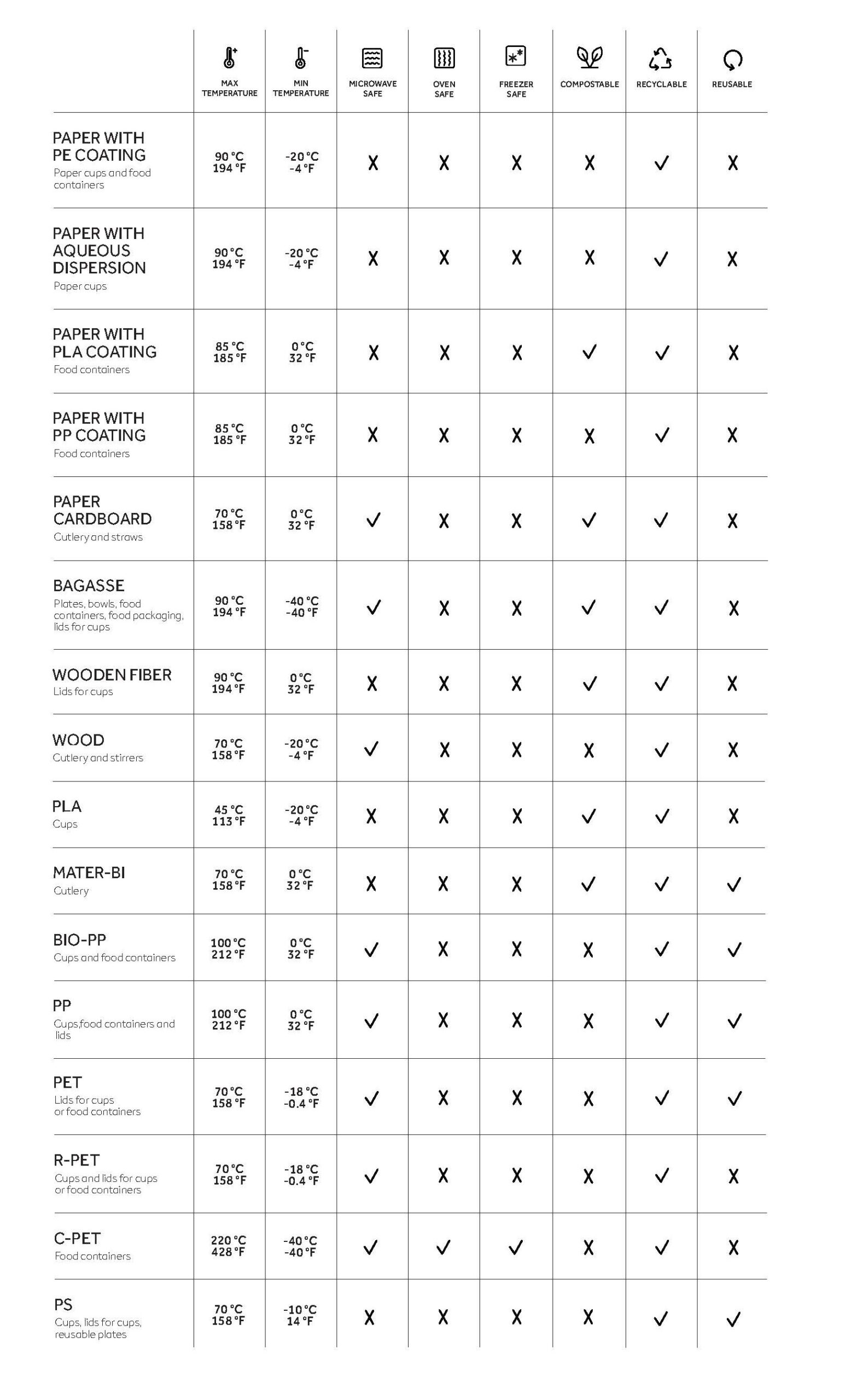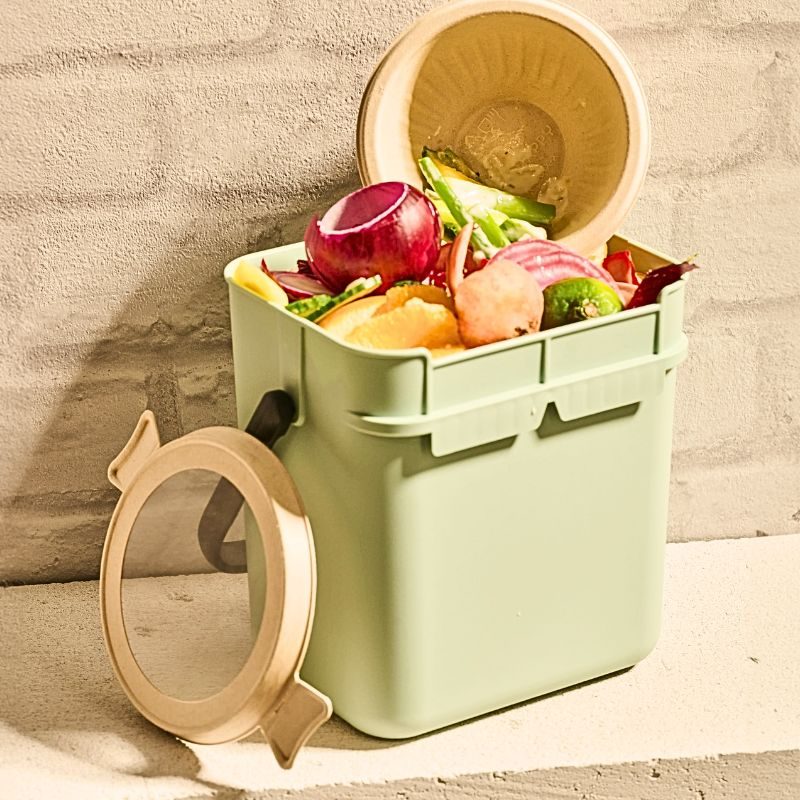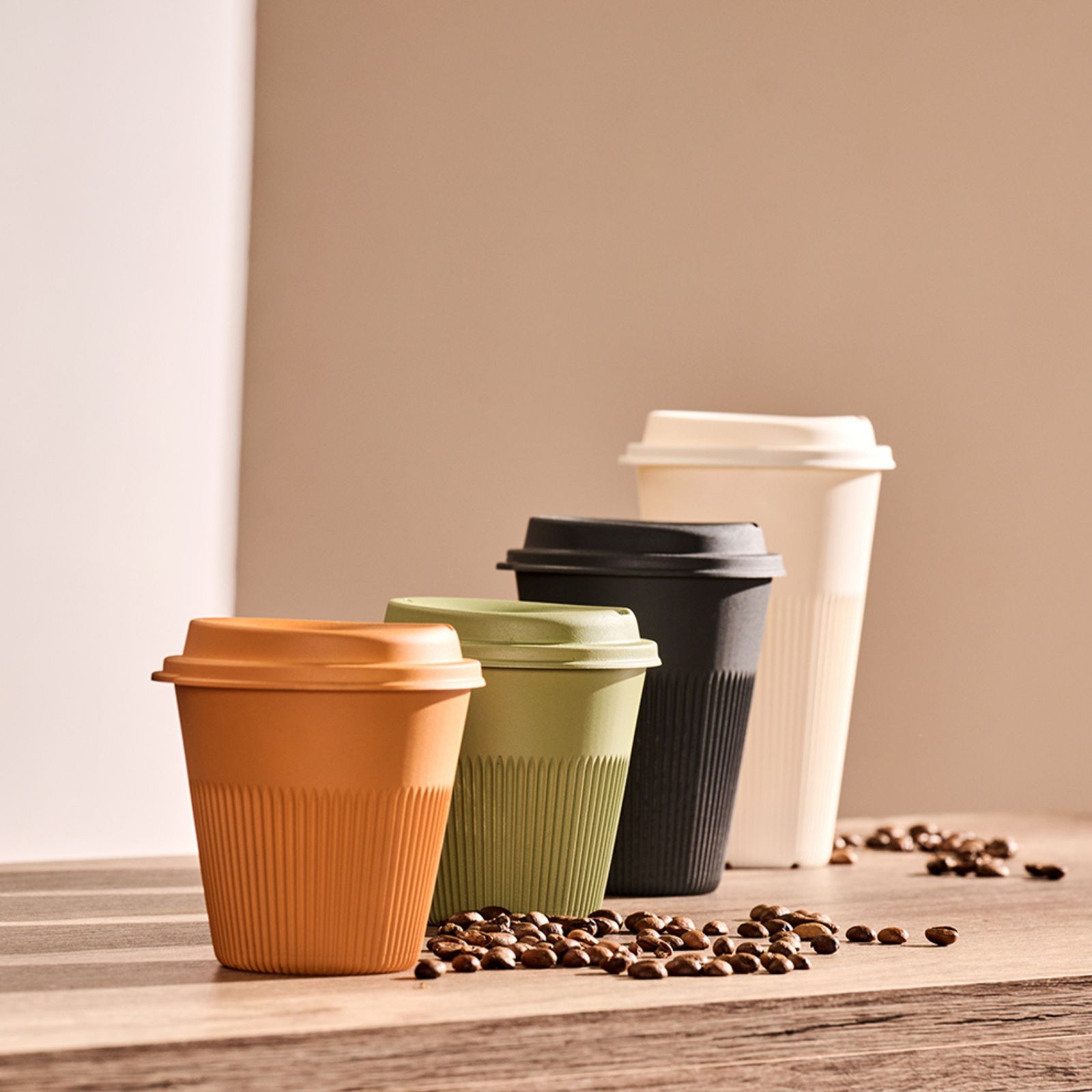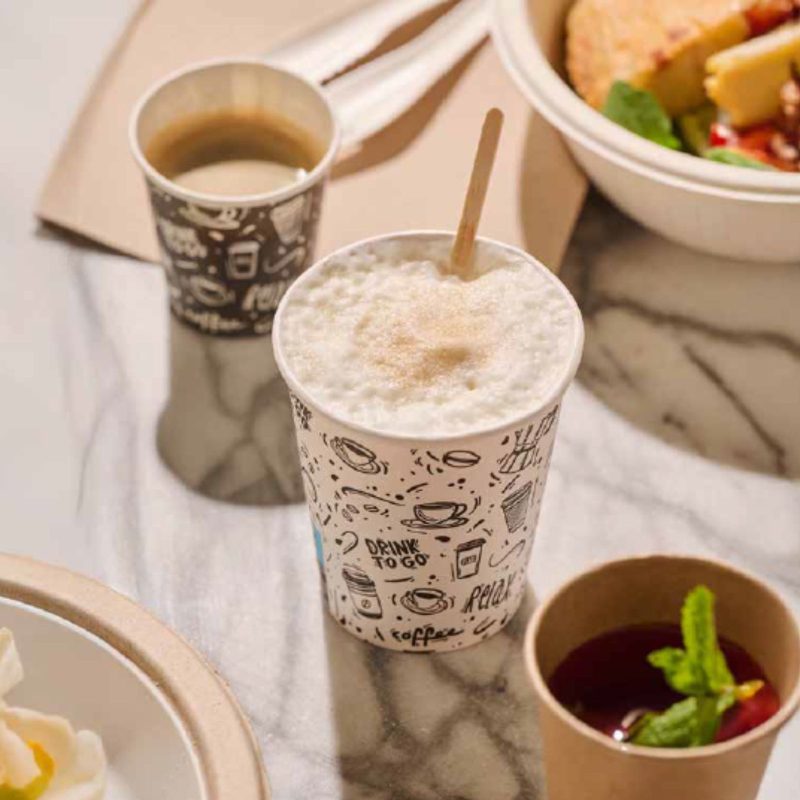MATERIALES PARA UN FUTURO SOSTENIBLE
Soluciones innovadoras diseñadas para reducir residuos y promover la circularidad.
IMPULSANDO LA SOSTENIBILIDAD A TRAVÉS MATERIALES MÁS INTELIGENTES
Nuestro compromiso es revolucionar el futuro del food packaging mediante materiales compostables, reciclables y reutilizables, impulsando así una economía circular real y sostenible.
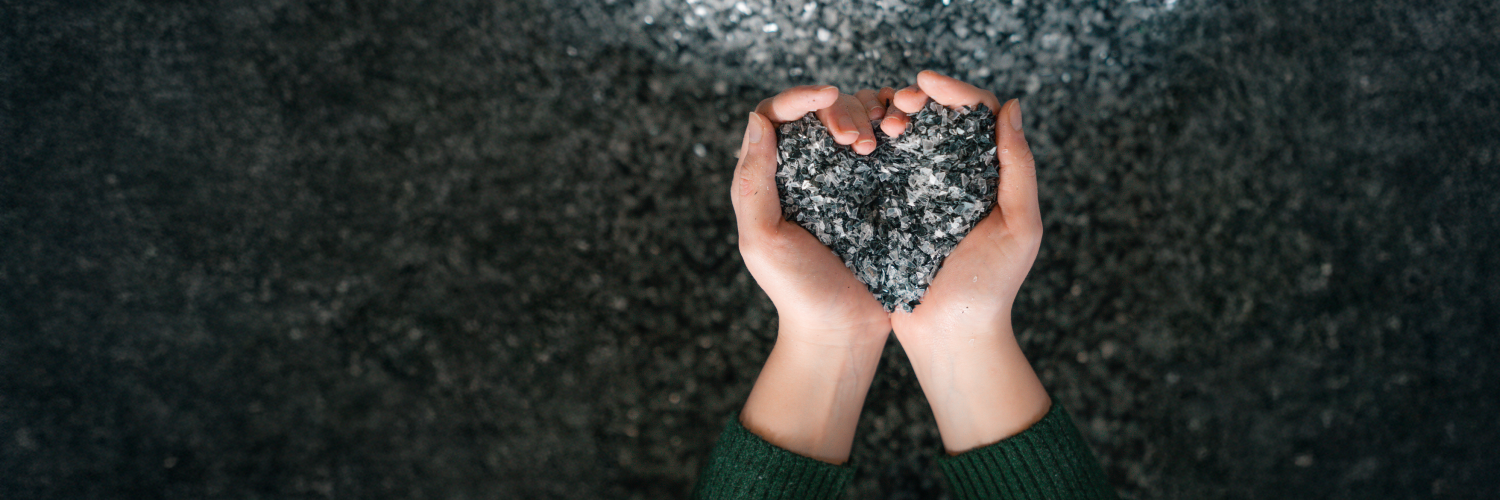
Los materiales sostenibles se seleccionan cuidadosamente para reducir el impacto ambiental sin comprometer el rendimiento del envasado. Estos materiales suelen ser biodegradables, compostables o reciclables, lo que ayuda a disminuir los residuos y la contaminación. Al adoptar alternativas ecológicas, el envasado de alimentos avanza hacia los principios de una economía circular, en la que los recursos se utilizan de manera eficiente y se minimiza la generación de desechos.
OPCIONES DE ENVASADO SOSTENIBLE
LISTA DE MATERIALES
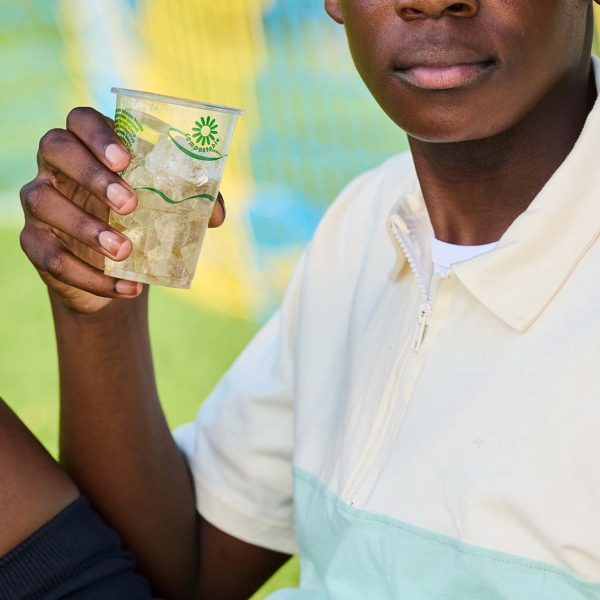
PLA
El PLA es un bioplástico fabricado a partir de azúcar o almidón fermentados, como el maíz. Es biodegradable, imprimible e ideal para bebidas frías y alimentos congelados. Certificados por DIN CERTCO según EN 13432, nuestros vasos de PLA se descomponen 90% en menos de 6 meses en condiciones adecuadas de compostaje.
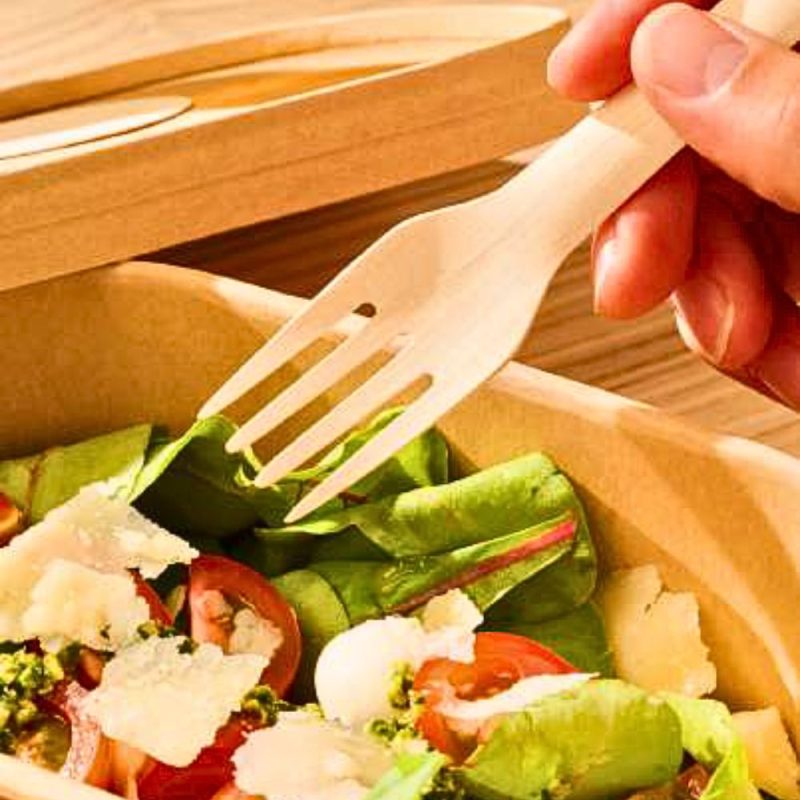
MADERA
Fabricado con madera de origen sostenible, este material es ideal para cubiertos ecológicos. Naturalmente biodegradable, resistente y seguro para los alimentos, ofrece un acabado suave y una experiencia gastronómica de calidad. Perfecto para tenedores, cuchillos, cucharas y agitadores, apoya los objetivos de sostenibilidad.
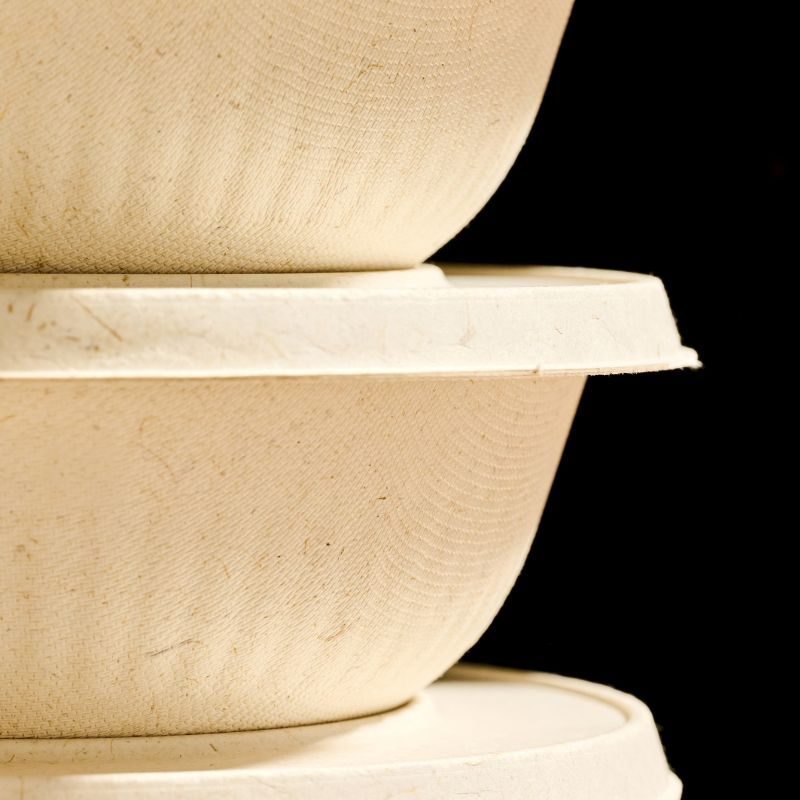
BAGAZO
El bagazo es un subproducto sostenible y compostable de la caña de azúcar. Fuerte y resistente al calor, es ideal para platos, cuencos y envases ecológicos. Con un acabado suave y natural, es apto para alimentos fríos y calientes, perfecto para empresas que buscan alternativas duraderas y sin plástico.
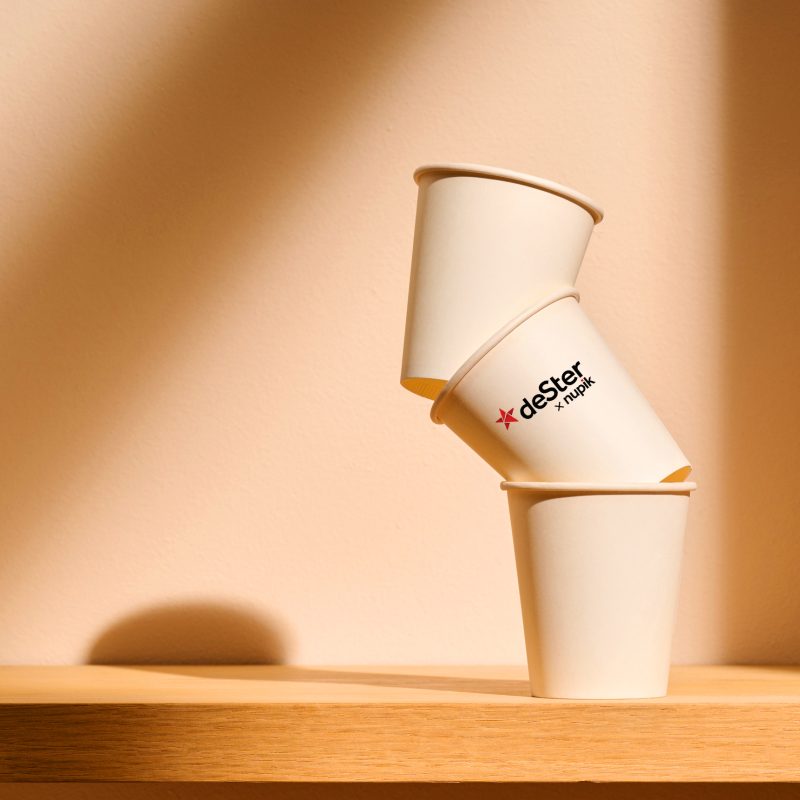
PAPEL CON
DISPERSIÓN ACUOSA
El papel con revestimiento acuoso es una opción sostenible para vasos y envases alimentarios, ya que ofrece resistencia a la grasa y la humedad sin dejar de ser biodegradable. Su superficie lisa y apta para alimentos es ideal para imprimir materiales ecológicos y de alto rendimiento.
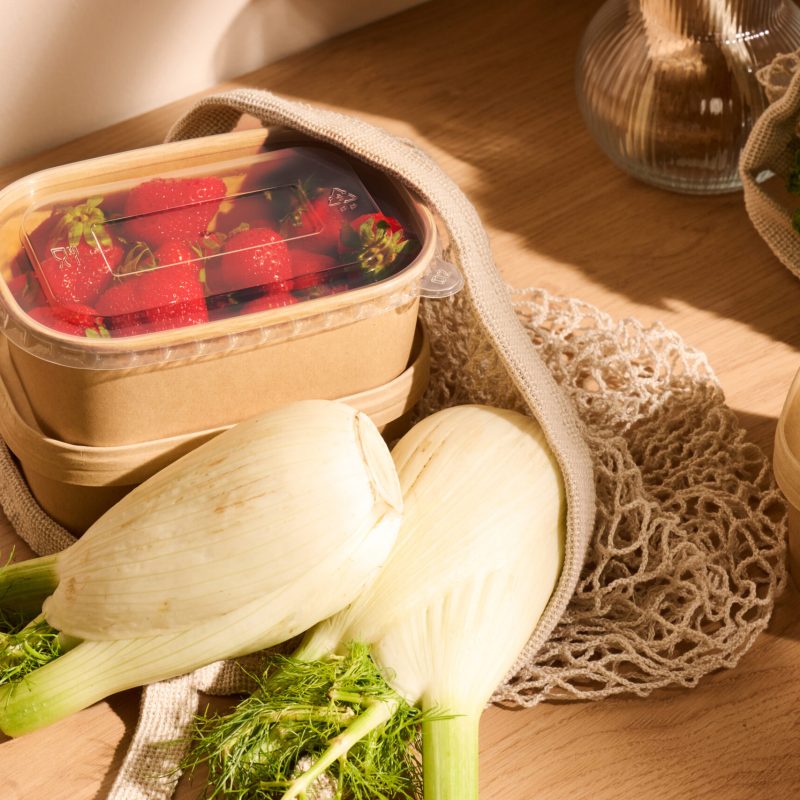
PAPEL CON LAMINADO PE
El papel recubierto de PE es ideal para envases de alimentos y vasos de bebidas, ya que ofrece resistencia a la humedad y la grasa. Ligero pero resistente, garantiza la seguridad y un fácil manejo. Con impresión personalizada y apto para alimentos, es una opción versátil y de alta calidad que favorece tanto la imagen de marca como el rendimiento.
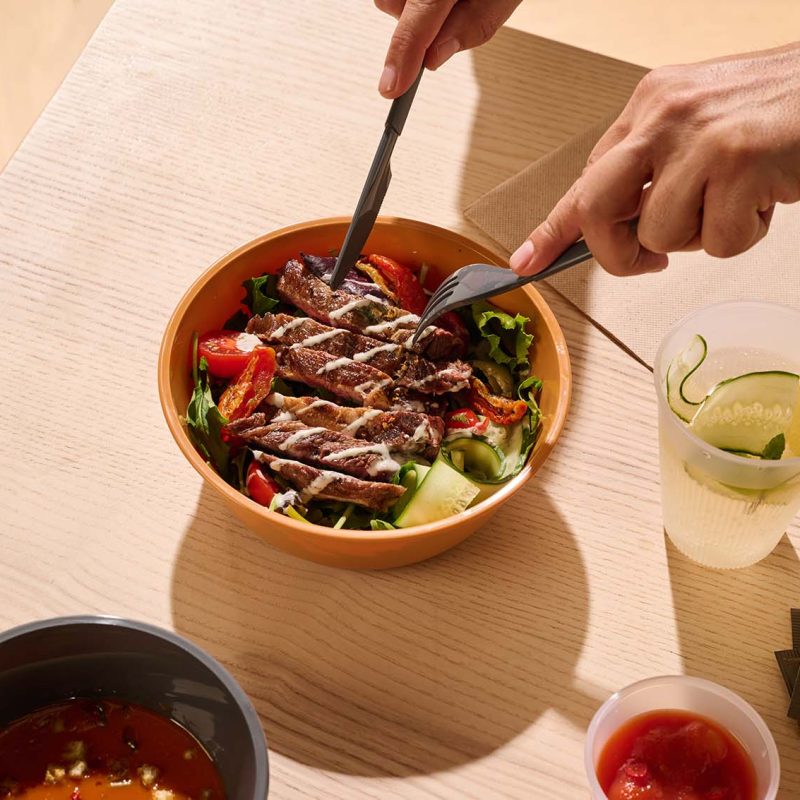
PP
El polipropileno (PP) es un material ligero, duradero y resistente al calor, ideal para vasos y envases alimentarios. Es seguro para los alimentos, reciclable y personalizable, perfecto para uso en frío o en caliente. El PP ofrece una solución práctica, ecológica y rentable para un envasado fiable.
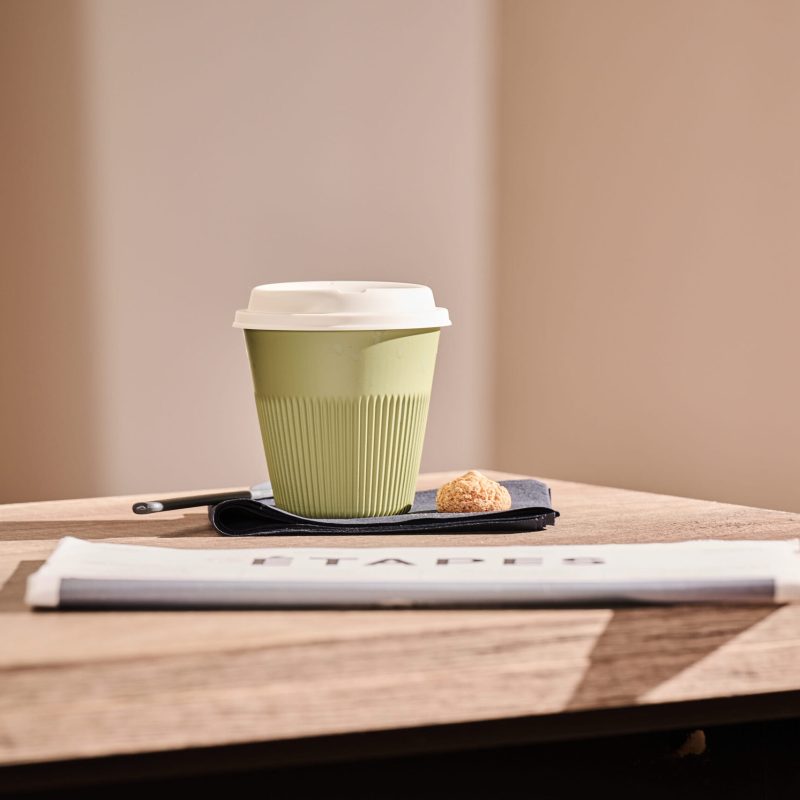
BIO PP
El biopolipropileno es una alternativa sostenible al plástico convencional, que ofrece la misma fuerza, resistencia al calor y diseño ligero. Fabricado a partir de fuentes renovables, es seguro para los alimentos, reciclable e ideal para marcas con conciencia ecológica que buscan envases duraderos y de alto rendimiento.
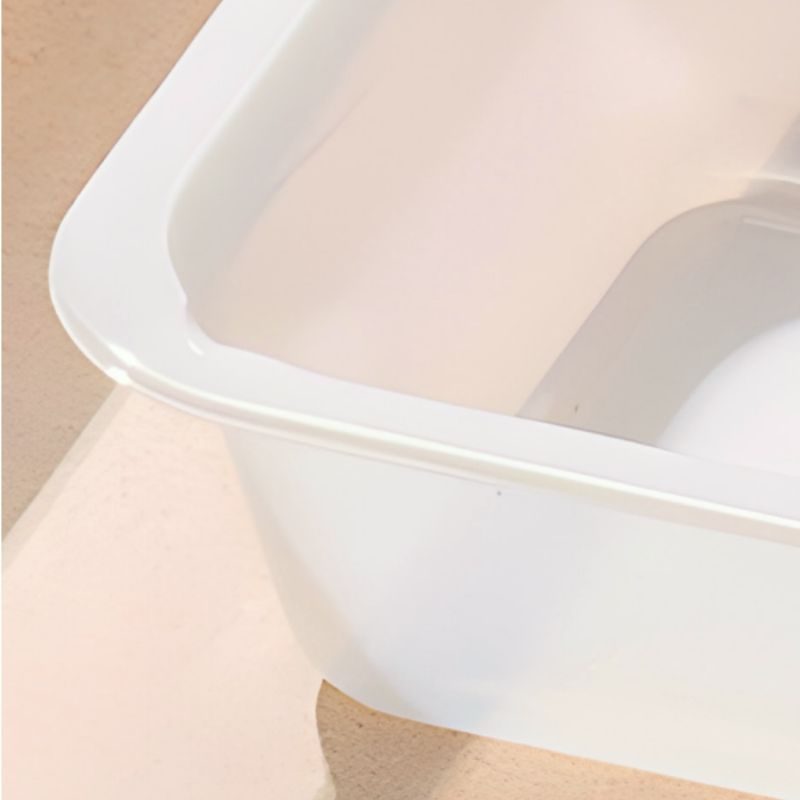
C-PET
El C-PET es un material resistente al calor y duradero, ideal para platos preparados y bandejas aptas para el horno. Con una gran estabilidad térmica, claridad y capacidad de reciclaje, se adapta a usos en frío y en caliente, al tiempo que apoya la sostenibilidad. Seguro para los alimentos y fiable, es una elección inteligente para envases de alto rendimiento.
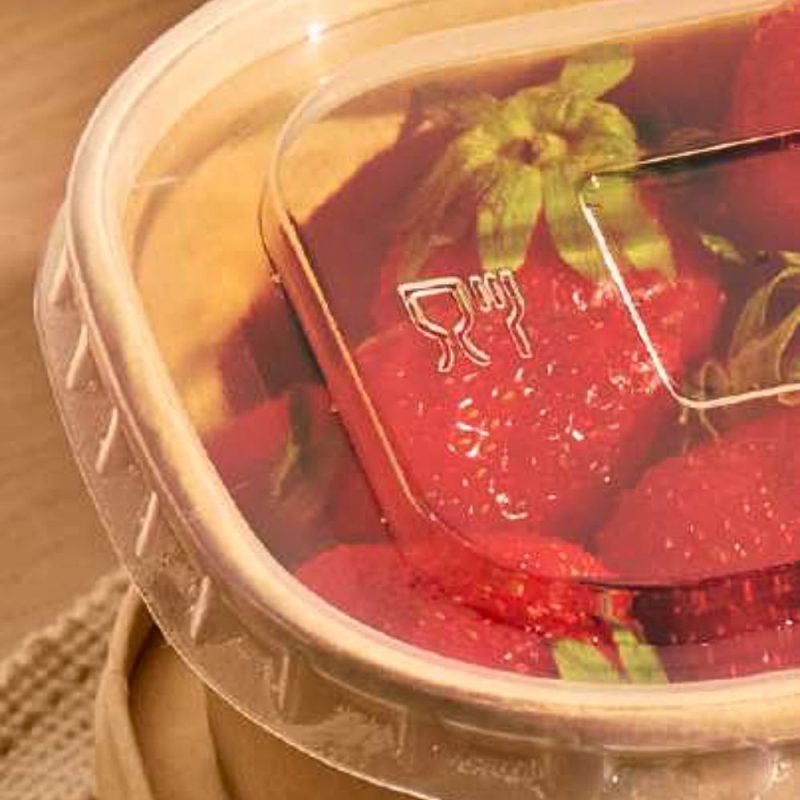
R-PET
El R-PET es una forma reciclada de PET que se utiliza en envases alimentarios como tapas, botellas y recipientes. Reduce los residuos de plástico y la dependencia de materiales vírgenes, apoyando la sostenibilidad y la economía circular. Duradero y transparente, el R-PET es una opción ecológica para las necesidades de envasado modernas.
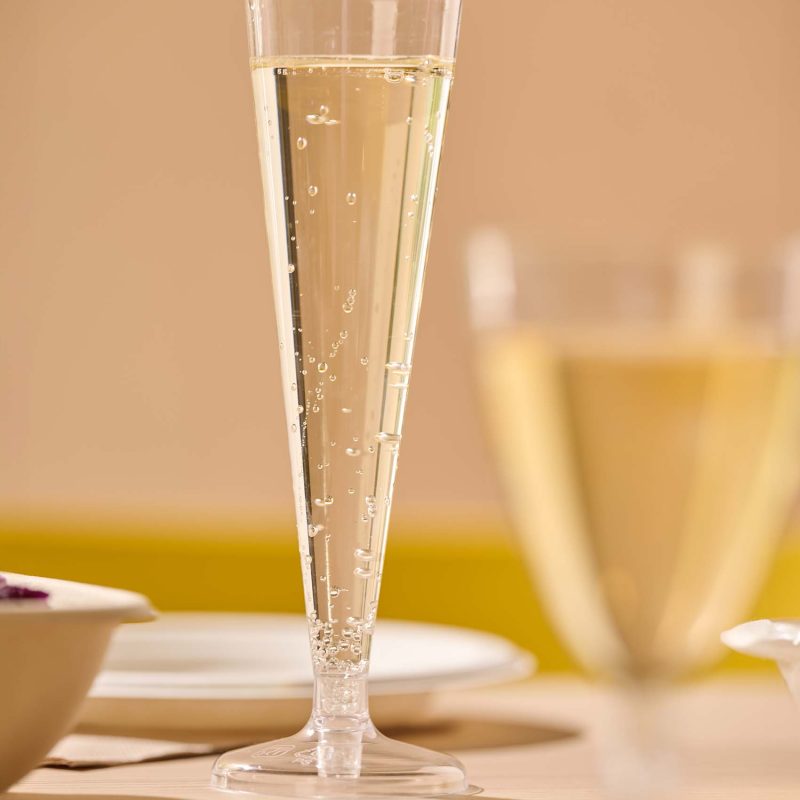
PS
El poliestireno es un material rígido y ligero ideal para vasos, cubiertos y platos. Ofrece un gran aislamiento para artículos calientes y fríos, con una superficie lisa e imprimible. Rentable y apto para uso alimentario, es perfecto para grandes volúmenes de servicios alimentarios desechables, ya que combina rendimiento y valor.
COMPOSTABLE VS. BIODEGRADABLE
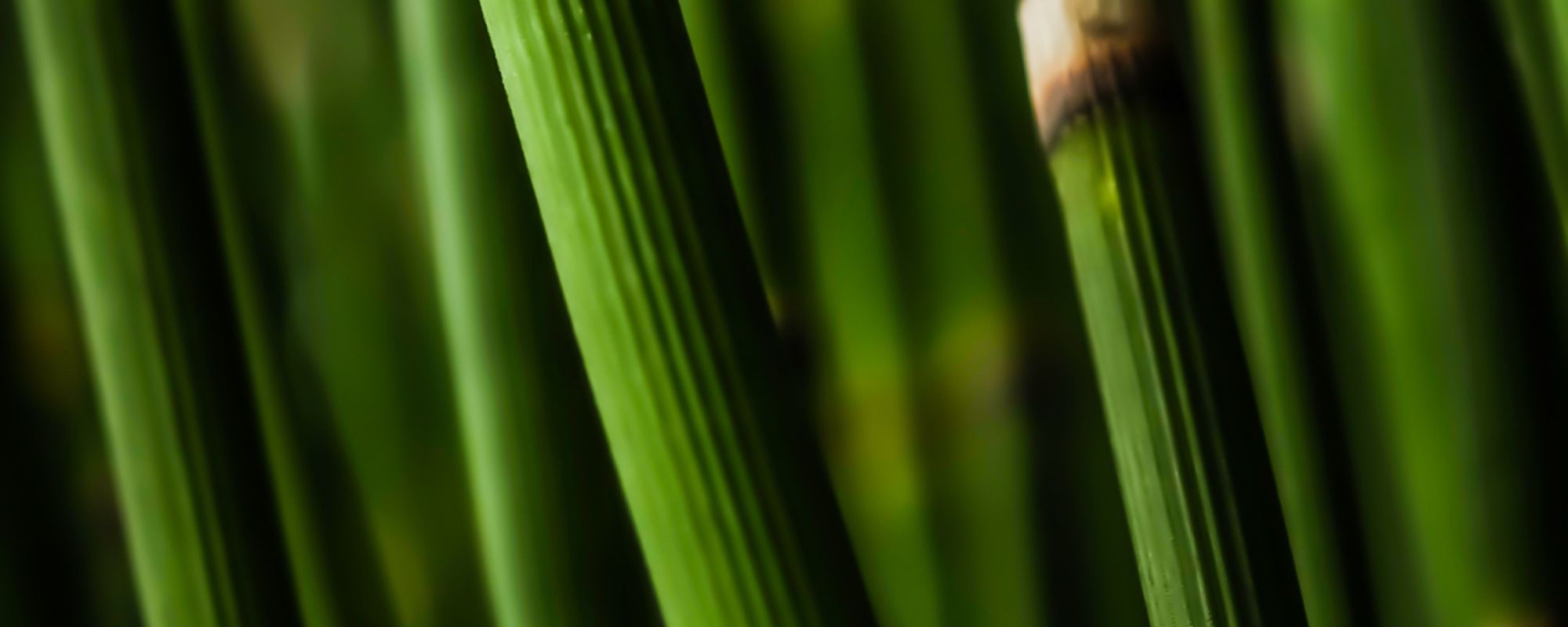
¿Qué significa realmente?
Probablemente haya visto estas palabras en los envases, pero ¿cuál es la verdadera diferencia?
Biodegradable significa que un material se descompone de forma natural con la ayuda de microbios. Pero puede llevar mucho tiempo: algunos plásticos pueden durar siglos.
Los materiales compostables En cambio, los materiales se descomponen más rápidamente en las condiciones adecuadas, convirtiéndose en un suelo limpio y sano sin dejar residuos nocivos. Esto puede ocurrir en el compostaje industrial (unos 6 meses) o en el doméstico (hasta un año).
Así que, aunque ambos son mejores para el planetaEl compostable es la opción más limpia y rápida para ser ecológico.
PROPIEDADES DEL MATERIAL
Los materiales de envasado ecológicos se centran en la sostenibilidad biodegradable, compostableo reciclable. A menudo fabricados a partir de recursos renovables, ayudan a reducir los residuos y la contaminación, apoyando una economía circular y promoviendo la responsabilidad medioambiental a largo plazo.
